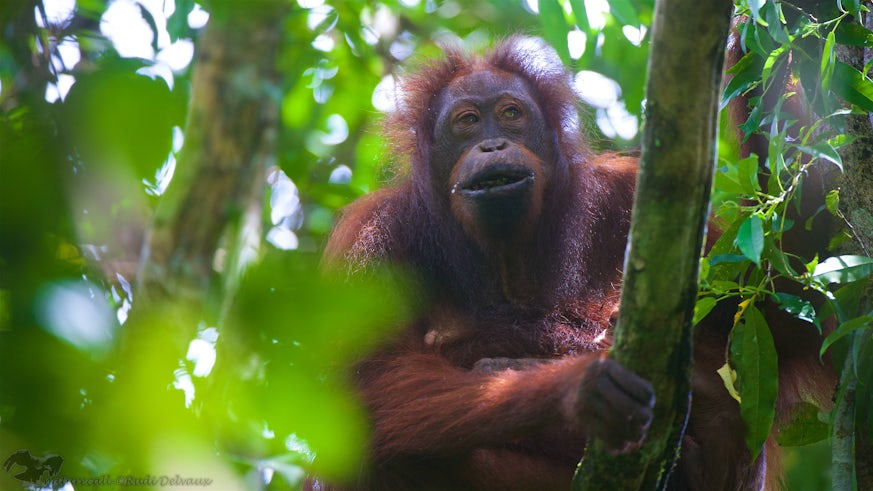One billion dollars not enough to halt orangutan decline
17 March 2022

A new study shows that despite huge investment, orangutans are still rapidly declining, leading to calls for better targeted conservation strategies
Things are not looking good for the orangutan. All three species of the iconic red ape, which inhabits only Indonesia and Malaysia, are classified as critically endangered. This means they face imminent extinction without better protection.
A new study, which used data from Cardiff University’s Danau Girang Field Centre (DGFC), revealed that certain conservation activities are better at saving orangutans than others, as well as being more cost-effective.

Prof Benoit Goossens, DGFC Director said: "We recommend that our findings are applied in the planning of future funding and policy strategies for orangutan conservation.
“We believe that it would be highly beneficial for orangutans and other species if data on their distribution and densities, and detailed information on conservation programmes could be transparently and centrally coordinated, made publicly available, and regularly updated by participating organizations working in species conservation.”
Published in the journal Current Biology, the study used data on orangutan conservation investments to assess spending on different strategies, including forest protection and management, patrolling and law enforcement, and rescue and rehabilitation. The researchers estimated how much each of these activities benefitted local orangutan populations compared with taking no action.
Dr Truly Santika, lead author of the paper, explained the rationale behind the study: “To our knowledge no one has ever fully analysed the costs and benefits of different conservation activities for the likelihood of survival of a protected species. Similar analyses could be applied to many rare species. Considering the urgent need to conserve biodiversity, it is important such cost-effectiveness analyses are developed to optimize the investment of limited conservation dollars”.

One of the contributing researchers, Prof Meijaard, University of Kent, said: “What is most important in this study is that it shows us that what we are investing in might not be particularly good for orangutan survival. The study really shows us that if we want to save the orangutan from extinction, we need to invest in the basics of nature conservation, which is the protection of species habitats and working with local communities to reduce threats such as killing and capture”.
The study showed that habitat protection, patrolling, and community engagement strategies had the greatest investment return for maintaining orangutan populations. Restoration of orangutan habitat through reforestation was found to be very expensive compared to forest protection and management.
Rescue and release of previously captured orangutans had low-cost effectiveness as it had little deterrent effect on illegal orangutan killing and trade, and it did not increase wild populations within current species ranges.
Julie Sherman, another contributing researcher from Wildlife Impact, noted: “Rehabilitation and release is an important tool to recover species that have few individuals left in the wild. If we act now, we can protect wild orangutans in their natural habitats, which is much more cost-effective than trying to restore their populations once they have been killed, captured, or displaced from their homes”.
The costs of orangutan conservation activities vary according to region. In Malaysia, land prices and labour costs are much higher than in Indonesian. This drives up prices of activities requiring land acquisition, such as the establishment of protected areas, or the involvement of many people, such as patrolling.
The Danau Girang Field Centre is a research and training facility, located in Malaysian Borneo, and is co-managed by Sabah Wildlife Department and Cardiff University’s School of Biosciences.